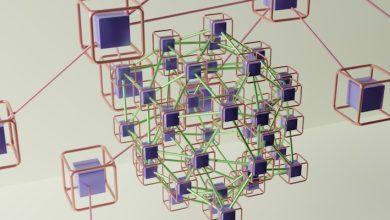Neo (NEO): The Smart Economy Blockchain

- Understanding the fundamentals of Neo (NEO) blockchain
- The evolution of Neo (NEO) as a smart economy platform
- How Neo (NEO) is reshaping the blockchain industry
- The unique features that set Neo (NEO) apart from other blockchains
- Exploring the potential for growth and adoption of Neo (NEO)
- A closer look at the technology behind Neo (NEO) and its applications
Understanding the fundamentals of Neo (NEO) blockchain
Neo blockchain, also known as NEO, is a prominent player in the world of smart economy platforms. It offers a range of features and functionalities that set it apart from other blockchain networks. To truly grasp the potential of Neo, it is essential to understand its fundamentals.
One of the key aspects of Neo is its focus on digitizing assets and automating the management of digital assets through smart contracts. This allows for the creation of decentralized applications (dApps) that can run on the Neo network. These dApps can facilitate a wide range of transactions, from simple peer-to-peer exchanges to more complex financial instruments.
Another important feature of Neo is its support for multiple programming languages. While many blockchain platforms are limited to a single language like Solidity, Neo allows developers to choose from languages such as C#, Java, and Python. This flexibility makes it easier for developers to build and deploy smart contracts on the Neo network.
Neo also stands out for its emphasis on regulatory compliance. Unlike some other blockchain platforms that operate in a legal gray area, Neo has taken steps to ensure that its network is compliant with existing regulations. This makes Neo an attractive option for businesses and organizations looking to leverage blockchain technology without running afoul of the law.
Overall, Neo offers a robust and user-friendly platform for building the smart economy of the future. By understanding the fundamentals of Neo blockchain, developers and users can unlock the full potential of this innovative technology.
The evolution of Neo (NEO) as a smart economy platform
Neo has undergone significant evolution as a smart economy platform since its inception. Initially known as Antshares, it was rebranded as Neo in 2017 to better reflect its vision of a smart economy built on blockchain technology. Neo aims to digitize assets, automate management using smart contracts, and realize a “smart economy” where digital assets can be easily traded and managed.
One of the key features of Neo is its support for multiple programming languages, making it accessible to a wide range of developers. This flexibility has attracted a diverse community of developers who have contributed to the growth of the Neo ecosystem. As a result, Neo has become a popular platform for building decentralized applications (dApps) and smart contracts.
Neo’s consensus mechanism, known as Delegated Byzantine Fault Tolerance (dBFT), ensures fast transaction speeds and high scalability. This mechanism has helped Neo to distinguish itself from other blockchain platforms that struggle with slow transaction times and high fees. As a result, Neo has positioned itself as a viable option for enterprises looking to leverage blockchain technology for their operations.
In addition to its technical capabilities, Neo has also focused on building strong partnerships with industry players and governments. These partnerships have helped Neo gain credibility and expand its reach beyond the cryptocurrency community. By collaborating with institutions and businesses, Neo has positioned itself as a key player in the development of the smart economy.
Overall, Neo’s evolution as a smart economy platform has been marked by technical innovation, community engagement, and strategic partnerships. As it continues to grow and adapt to the changing landscape of blockchain technology, Neo is poised to play a significant role in shaping the future of the smart economy.
How Neo (NEO) is reshaping the blockchain industry
Neo, also known as NEO, is making significant strides in reshaping the blockchain industry by offering a platform that focuses on creating a smart economy. This innovative approach has garnered attention from investors and developers alike, positioning Neo as a key player in the ever-evolving blockchain space.
One of the ways Neo is transforming the industry is through its focus on digital assets. By enabling the digitization of real-world assets, Neo is opening up new opportunities for investors to trade and exchange assets in a secure and transparent manner. This emphasis on digital assets has the potential to revolutionize traditional financial markets and create a more efficient and accessible economy.
Additionally, Neo’s use of smart contracts is revolutionizing the way business transactions are conducted. Smart contracts are self-executing contracts with the terms of the agreement directly written into code. This eliminates the need for intermediaries and streamlines the process, reducing costs and increasing efficiency. With Neo’s smart contract capabilities, businesses can automate and enforce agreements without the need for third-party intervention.
Furthermore, Neo’s focus on scalability and interoperability sets it apart from other blockchain platforms. By utilizing a unique consensus mechanism and cross-chain interoperability, Neo is able to handle a high volume of transactions quickly and efficiently. This scalability allows Neo to support a wide range of decentralized applications, making it a versatile and adaptable platform for developers.
In conclusion, Neo is reshaping the blockchain industry by offering a platform that prioritizes digital assets, smart contracts, scalability, and interoperability. As the blockchain space continues to evolve, Neo’s innovative approach to creating a smart economy is poised to make a lasting impact on the industry.
The unique features that set Neo (NEO) apart from other blockchains
One of the key distinguishing features of Neo (NEO) that sets it apart from other blockchains is its focus on creating a smart economy. Neo aims to digitize assets using smart contracts, enabling automated management of digital assets without the need for intermediaries.
Another unique feature of Neo is its support for multiple programming languages, including C#, Java, and Python. This makes it easier for developers to build decentralized applications on the Neo blockchain, enhancing its versatility and usability.
Neo also offers a robust governance model that allows token holders to participate in decision-making processes through voting. This democratic approach sets Neo apart from other blockchains that lack a formal governance structure.
Furthermore, Neo utilizes a dual-token system, with NEO and GAS tokens serving different purposes within the ecosystem. This dual-token model helps to incentivize network participation and ensures a stable and sustainable economy for Neo users.
In addition, Neo boasts high transaction speeds and scalability, thanks to its innovative consensus mechanism known as Delegated Byzantine Fault Tolerance (dBFT). This consensus algorithm enables Neo to process thousands of transactions per second, making it a practical choice for enterprise applications.
Exploring the potential for growth and adoption of Neo (NEO)
Neo (NEO) has been gaining attention in the cryptocurrency world due to its unique approach to smart contracts and digital assets. As more people become aware of the potential for growth and adoption of Neo, it’s important to explore what sets it apart from other blockchain platforms. One key factor is Neo’s focus on regulatory compliance and its integration of digital identity technology. This could make it more appealing to businesses and governments looking to utilize blockchain technology in a secure and compliant manner.
Additionally, Neo’s ability to support multiple programming languages, such as C# and Java, makes it more accessible to developers who may not be familiar with specialized blockchain programming languages. This could lead to a wider range of applications being built on the Neo platform, further driving growth and adoption.
Furthermore, Neo’s innovative consensus mechanism, known as Delegated Byzantine Fault Tolerance (dBFT), offers fast transaction speeds and high levels of security. This could make Neo an attractive option for businesses and individuals looking for a reliable and efficient blockchain solution.
Overall, the potential for growth and adoption of Neo is promising, thanks to its unique features, focus on compliance, and developer-friendly approach. As more people discover the benefits of Neo, it could become a major player in the smart economy blockchain space.
A closer look at the technology behind Neo (NEO) and its applications
Neo (NEO) is a blockchain platform that aims to create a smart economy by utilizing smart contracts and digital assets. The technology behind Neo is based on a unique consensus mechanism called Delegated Byzantine Fault Tolerance (dBFT). This consensus algorithm ensures fast transaction speeds and high levels of security, making Neo a popular choice for developers looking to build decentralized applications (dApps).
One of the key features of Neo is its ability to support multiple programming languages, including popular languages like C# and Java. This makes it easier for developers to build and deploy smart contracts on the Neo blockchain, opening up a wide range of possibilities for creating innovative applications.
Neo also offers a unique digital identity system that allows users to verify their identity on the blockchain securely. This feature has important implications for industries like finance and healthcare, where identity verification is crucial for compliance and security.
In addition to its digital identity system, Neo supports the creation of digital assets through its native token, GAS. GAS is used to pay for transaction fees and deploy smart contracts on the Neo blockchain, providing an incentive for users to participate in the network and maintain its security.
Overall, the technology behind Neo is designed to create a smart economy where digital assets can be easily managed, transferred, and traded. With its focus on scalability, security, and usability, Neo is well-positioned to drive innovation in the blockchain space and revolutionize the way we think about digital assets and smart contracts.



